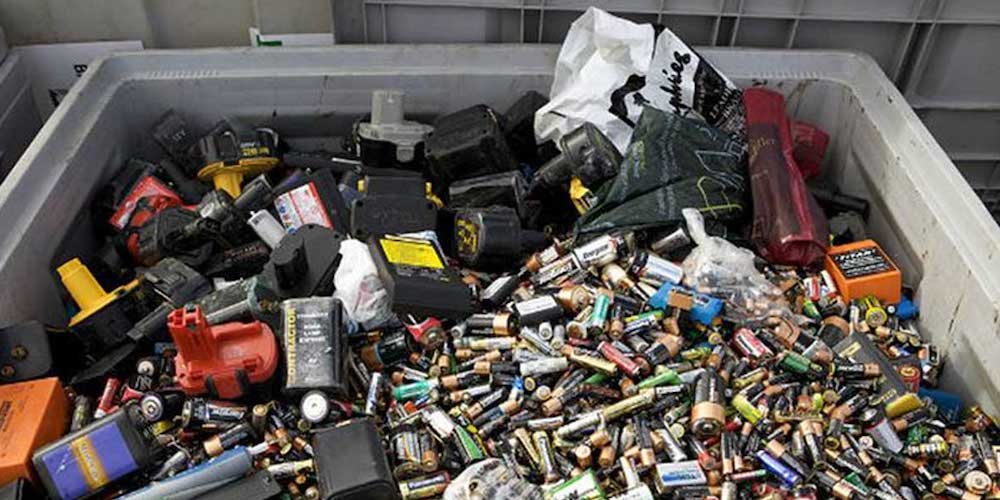New Battery Waste Management Rules, 2022

The Union Ministry of Environment, Forest and Climate Change, Government of India published the Battery Waste Management Rules, 2022 on 24th August, 2022 to ensure environmentally sound management of waste batteries.
The Ministry said that the notification of these rules is a transformative step towards implementation of the announcement made by Prime Minister Shri Narendra Modi in his address to the Nation on Independence Day on 15th August, 2021 to promote Circular Economy in full earnest.
New rules will replace Batteries (Management and Handling) Rules, 2001.
The rules cover all types of batteries, viz. Electric Vehicle batteries, portable batteries, automotive batteries and industrial batteries.
The rules function based on the concept of Extended Producer Responsibility (EPR) where the producers (including importers) of batteries are responsible for collection and recycling/refurbishment of waste batteries and use of recovered materials from wastes into new batteries.
EPR mandates that all waste batteries be collected and sent for recycling/refurbishment, and it prohibits disposal in landfills and incineration. To meet the EPR obligations, producers may engage themselves or authorise any other entity for collection, recycling or refurbishment of waste batteries.
The rules will enable setting up a mechanism and centralized online portal for exchange of EPR certificates between producers and recyclers / refurbishers to fulfil the obligations of producers.
The rules promote setting up of new industries and entrepreneurship in collection and recycling / refurbishment of waste batteries.
Mandating the minimum percentage of recovery of materials from waste batteries under the rules will bring new technologies and investment in the recycling and refurbishment industry and create new business opportunities.
Prescribing the use of a certain amount of recycled materials in making of new batteries will reduce the dependency on new raw materials and save natural resources.
Online registration & reporting, auditing, and a committee for monitoring the implementation of rules and to take measures required for removal of difficulties are salient features of rules for ensuring effective implementation and compliance.
On the principle of Polluter Pays Principle, environmental compensation will be imposed for non-fulfilment of Extended Producer Responsibility targets, responsibilities and obligations set out in the rules. The funds collected under environmental compensation shall be utilised in collection and refurbishing or recycling of uncollected and non-recycled waste batteries.
It may be noted that the first Battery Waste Management Rules were enacted in 2001 to address the disposal of battery waste in an environmentally sustainable way so as to regulate and address the pollution caused by disposing of batteries that were causing environmental as well as health concerns. The Act was mainly enacted to standardise waste management of Lead Acid Batteries as they have a massive quantity of sulphuric Acid and lead, which, when exposed to human health, causes severe damage. It was also enacted to maintain the record of the transaction that occurred related to lead-acid batteries to keep track of their management procedure and reduce pollution caused by them.
Although the rule of 2001 was very useful in addressing battery waste, with the evolution of time and the influx of new technology in the market, the use and variety of batteries also increased, which required to be added for proper waste management. Therefore to address these changes and make producers liable new amendment rules are introduced under Battery Waste Management Rules, 2022.
The important change under the new rules is that its rules are applicable to any Producer, dealer, other entity, or consumer who is involved in the collection and transportation segregation or any other process involved in the management of Waste Battery. Besides this, these rules are not only limited to lead batteries but include all types of batteries regardless of their chemistry, volume, material composition, shape, weight and use, which include an automotive battery, Electric Vehicle Battery, Industrial Battery and Portable battery; these new rules have many new provisions related to definitions, added responsibilities, and authorisation processes.
Similarly the new rules emphasise that the responsibility on any producer or battery for waste management of battery should be carried away in an environmentally sound way. The notion of Extended Producers’ Responsibility is grounded on three base principles that are “life-cycle thinking”, “Pollution prevention approach)” and the “PPP (Polluter pay principle)”. The Policy of EPR makes it the accountability of the producers / recyclers / manufacturers not only to take back merchandise for recycling but also to make better producers with a longer life span to limit the quantity of battery waste generated, which is the root cause of a gradual surge in environmental pollution.
Overall, the new Rules have increased the scope of the previous rules, including the newer type of batteries like automotive battery, Electric Vehicle Battery, Industrial Battery and Portable battery, and the inclusion of Extended Producers’ Responsibility, EPR Targets, Provision for Centralised targets and enhanced responsibilities of the critical stakeholder’s Producers’, Manufacturers, Recycler, Refurbisher, Other Entities and Governmental or Public Waste Management Authorities. These changes made align with the changes in the market from linear to circular economy and initiatives by the government to control the growing pollution from battery.



